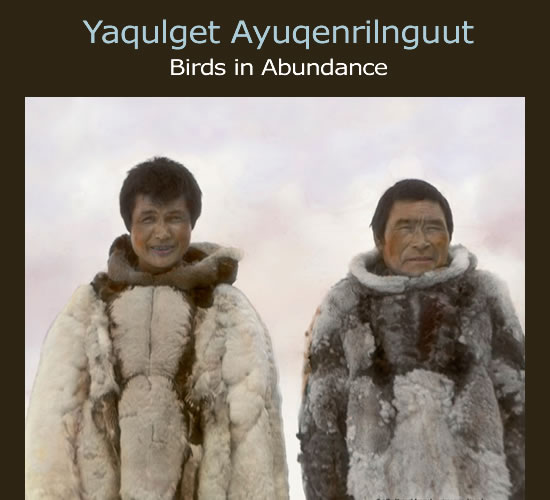|
 570 3rd Ave # 219 570 3rd Ave # 219
Bethel, AK 99559
(907) 543-1541
 625 C Street
Anchorage, AK 99501 625 C Street
Anchorage, AK 99501
(907)929-9200
anchoragemuseum.org
|
|

|
Courtesy, National Museum of the American Indian, Smithsonian Institution, L2297,
Dr. Leuman M. Waugh, 1935 |
| Ilurall'er (Kenneth Samson) wearing a swan skin parka and Kanglek (John Gunlik) of Kipnuk wearing a tamacenaq (parka made of a combination of different bird skins). |
 |
Wagg'uq tua-i tamakunek tamaa-i kanassaagaucirluteng pitullrulliniluteng.
[When birds arrived in spring] people began eating them to try and survive until other foods were available.
--Paul John, Toksook Bay |
The lowland delta of southwest Alaska supports one of the largest populations of water birds in the world. Countless ponds, lakes, and streams crisscross the marshy coastal wetlands. More than a million ducks and half a million geese breed there annually each spring and summer.
Coastal elders recall flocks of geese passing overhead, blocking out the sun and making a thundering noise. |
Next
|
|

